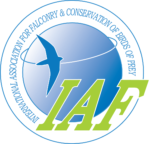IUCN Recommendation: Preventing electrocution and collision impacts of power infrastructure on birds | PDF
ALARMED by mounting evidence that a largely unaddressed silent epidemic of electrocution and collision of a wide diversity of birds and bats is resulting from inappropriately designed and routed electricity distribution infrastructure, with significant negative impacts on some avian populations;
CONCERNED that effects may be especially severe for apex predators and important scavengers, including globally threatened, internationally protected raptors species such as the Saker Falcon (Falco cherrug), Steppe Eagle (Aquila nipalensis), Spanish Imperial Eagle (Aquila adalberti), Egyptian Vulture (Neophron percnopterus), White-backed Vulture (Gyps africanus) and Cape Vulture (Gyps coprotheres);
AWARE that bird mortality through electrocution and collision is documented in every region of the world, with the ‘Review of the conflict between migratory birds and electricity power grids in the African-Eurasian region’ adopted by the Tenth Conference of Parties to the Convention on Migratory Species (CMS COP10), the Fifth Meeting of Parties to the Agreement on the Conservation of African–Eurasian Migratory Waterbirds (AEWA MOP5) and the First Meeting of Signatories to the CMS Memorandum of Understanding on the Conservation of Migratory Birds of Prey in Africa (CMS Raptors MoU MOS1) estimating that up to 10,000 electrocutions and 100,000s of collisions may occur per country in the African-Eurasian region each year;
FURTHER AWARE that for migratory bird species, the cumulative impacts of poorly located or poorly designed power infrastructure may be particularly significant;
TAKING INTO ACCOUNT that risks of electrocution and collision will increase with proliferation of new unsafe or poorly located infrastructure;
NOTING that bird electrocution and collision can also have direct and indirect financial and social impacts by damaging structures and disrupting power supplies;
APPLAUDING the scientific studies conducted to identify, address and tackle this problem in many countries including Hungary, Mongolia, South Africa, Spain and USA, and regional initiatives to address the issue, such as the United Nations Development Programme (UNDP) / Global Environment Facility (GEF) ‘Migratory Soaring Birds Project’ led by BirdLife International; and
RECOGNISING that guidance on good planning, as well as cost-effective, simple designs for bird-safe infrastructure and using a sensitivity mapping tool as well as methods for mitigation of existing infrastructure are readily available and effective in preventing electrocution and collision of birds while contributing to the stability of energy supplies;
The World Conservation Congress, at its session in Hawai‘i, United States of America, 1-10 September 2016:
1. CALLS UPON governmental bodies and power companies to work together and to ensure that all new and where possible existing power infrastructure complies with measures to prevent bird electrocution and collision;
2. RECOMMENDS the use of available multi-language guidance adopted by CMS COP10, AEWA MOP5 and CMS Raptors MoU MOS1, as well as BirdLife International’s sensitivity mapping and guidance on this issue;
3. URGES adequate environmental assessments (Strategic Environmental Assessment –SEA, Environmental Impact Assessment –EIA) for any planned electricity infrastructure to avoid sensitive areas and to identify, and mitigate through location, bird-safe design and construction measures, potential electrocution and collision impacts on birds;
4. FURTHER CALLS UPON responsible financial institutions to adopt appropriate policies to ensure that power companies are required to minimise impacts on birds through planning to select appropriate locations, to implement adequate EIAs, to utilise safe designs and to employ effective monitoring as part of the terms of funding;
5. FURTHER CALLS UPON research institutions to develop methods and designs to mitigate the impacts of such incidents on migrating birds and assess these methods and designs appropriately;
6. URGES relevant governmental bodies, power companies, financial institutions and other stakeholders to liaise with each other, and with the Secretariat and Energy Task Force of the CMS to ensure that existing and planned infrastructure which is harmful to birds is identified and is subject to urgent remediation, which has no adverse ramifications for other wildlife, with monitoring, including monitoring of vulnerable species at national and international level, to measure effectiveness; and
7. COMMENDS countries and organizations, including power utilities, which are funding research and implementing remediation measures.
–––
Please see the Resources for further links and downloads, including academic studies and materials for children and teachers.
